Introduction
The Sun Gun is one of the most enigmatic and speculative concepts to emerge from Nazi Germany’s desperate quest for superweapons during the Second World War. Despite its prominence in certain historical accounts, technical discussions, and speculative fiction, the Sun Gun was never fully developed or used in combat. It remains a subject of fascination among historians and conspiracy theorists, often cited as one of the most bizarre ideas conceived by the Third Reich.

In this article, we will explore the origins, theoretical design, and implications of the Sun Gun project. This includes its relationship with Nazi Germany’s other advanced weapon programs, its potential for altering the course of history, and its eventual relegation to the realm of pseudoscience and conjecture.
Historical Context: Nazi Germany’s Superweapon Ambitions
The Arms Race and the Pursuit of Superweapons
The Nazi regime, under Adolf Hitler, was obsessed with technological superiority, often pushing the limits of scientific knowledge and innovation. As World War II progressed, the German military sought to develop advanced weapons systems that would turn the tide of battle in their favor. This led to the initiation of several top-secret weapons programs, including the V-2 rocket, jet fighters, and even experimental nuclear research. The desire for weapons of mass destruction or revolutionary technological advancements was seen as key to achieving victory.
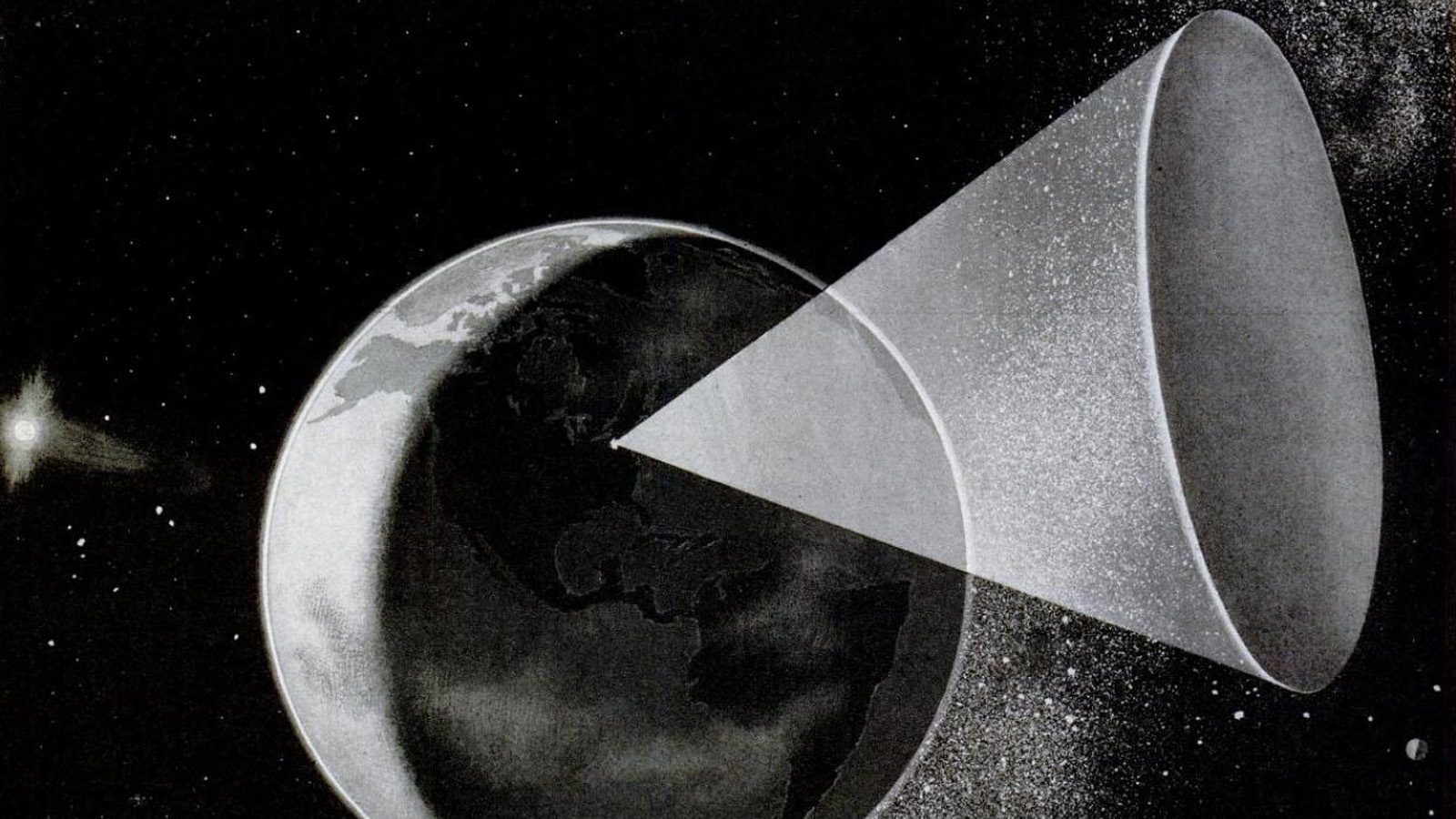
Among these radical ideas was the Sun Gun, a project that, while never operationalized, highlights the lengths to which Nazi Germany was willing to go in its pursuit of technological dominance.
The Sun Gun Concept in Popular Culture
The concept of the Sun Gun has often been sensationalized in popular culture and conspiracy theories, which has obscured its true origins and scientific feasibility. It is frequently depicted as a massive space-based weapon capable of harnessing the power of the sun to obliterate enemy targets. However, this depiction diverges significantly from the technical realities of the project.
The Sun Gun: Origins and Theoretical Design
Theoretical Foundations and Werner von Braun’s Influence
The idea of utilizing space-based weapons or harnessing solar energy had been explored by various scientists long before the Nazi regime’s interest in it. However, it is widely believed that the Sun Gun project was conceived by German engineer and physicist Hermann Oberth, who was a pioneer of rocket technology and a mentor to Wernher von Braun.
Oberth’s earlier works on rocket propulsion and space exploration laid the foundation for more fantastical ideas, including weaponization of outer space. In the mid-1940s, as Germany faced increasing defeats on the battlefield, the Nazis became desperate enough to pursue even the most speculative concepts, which led to the development of the Sun Gun project.
The Design of the Sun Gun
The concept of the Sun Gun involved the creation of an enormous satellite-like structure positioned in space, intended to reflect or focus the Sun’s rays onto specific areas on Earth. The project, if realized, would have relied on mirrors or lenses to concentrate sunlight into a concentrated beam powerful enough to destroy military targets, cities, or entire regions.
The Sun Gun’s design was proposed as a system comprising:
- A large mirror or concave lens: This would be used to capture and focus the Sun’s rays. The size of the mirror was proposed to be gigantic, with estimates ranging from 100 to 150 meters (328 to 492 feet) in diameter.
- A space-based platform: The Sun Gun would need to be deployed in orbit above the Earth, requiring a substantial spacecraft to carry the mirror into space and position it in such a way that it could focus sunlight onto the ground. This was a logistical challenge, given that Nazi Germany did not possess the necessary space technology to carry out such an operation.
- A focusing mechanism: The sunlight would be concentrated into an intense beam capable of generating extreme heat, which could potentially melt or vaporize targets on Earth’s surface.
Scale and Feasibility of the Sun Gun
At the heart of the Sun Gun project was the sheer scale of the concept. Building such a structure with the technology available at the time was virtually impossible. The construction of a mirror large enough to harness sunlight effectively in space would have required immense resources, and the technology to transport it into orbit was nowhere near developed. Even more critically, the idea of concentrating sunlight with enough precision and power to cause meaningful destruction was highly speculative.

Moreover, the materials necessary to construct such a large structure, especially with the level of heat resistance required for space-based equipment, did not exist in Nazi Germany’s inventory.
Nazi Germany’s Space Program and the Sun Gun
The Role of Wernher von Braun and Rocketry
Wernher von Braun, one of the most well-known figures in the history of rocketry, played a significant role in Nazi Germany’s military technology development, particularly with the V-2 rocket. The idea of the Sun Gun, though separate from von Braun’s primary work, was nonetheless an extension of the ambition to achieve space-based technologies. The V-2 rockets, which represented one of the first practical applications of guided missile technology, were seen as a stepping stone toward more sophisticated space exploration.
The Sun Gun, however, was not grounded in the reality of von Braun’s rocket work. While von Braun was focused on developing a missile that could reach the outer atmosphere, the Sun Gun project took a more fantastical approach, attempting to use the concept of orbital weaponry. Von Braun’s later work in the United States, particularly with NASA, saw him focus on space exploration, not weapons systems. This contrast further highlights the divide between the real-world applicability of Nazi space technology and the extreme ideas like the Sun Gun.
Rival Superweapon Programs
The Sun Gun was part of a broader context of Nazi Germany’s interest in developing “superweapons,” weapons that would give them a decisive edge in the war. The most notable example was the V-2 rocket, the first long-range guided ballistic missile, and jet aircraft like the Messerschmitt Me 262. However, despite the allure of the Sun Gun, it never reached the development phase of the V-2 or even the jet aircraft.
The Sun Gun was, in many ways, a symbol of the desperation that marked the final years of the Nazi regime. As Germany’s military situation became increasingly dire, the focus shifted from practical weapons to fantastical concepts like the Sun Gun, which were intended to offer a form of technological salvation that was ultimately unattainable.
The End of the Sun Gun Project
Post-War Analysis and the Fate of the Sun Gun
After the defeat of Nazi Germany in 1945, the Allies scoured the ruins of the Third Reich for evidence of its advanced weapons programs. Most of the practical projects, such as the V-2 rocket and jet aircraft, were either captured or destroyed. However, the Sun Gun project remained largely theoretical, with no physical prototypes or substantial research papers left behind.
Some historical accounts suggest that the project was abandoned in the closing months of the war due to its impracticality and the lack of necessary resources. By the time the war ended, the Nazis had failed to secure the resources needed for such a grandiose project, and the concept of space-based weapons was still far beyond the capabilities of the era.
Theories and Myths
In the decades following the war, the Sun Gun became a subject of myth and speculation. The conspiracy theory-driven narratives of secret Nazi technologies often included the Sun Gun as part of a broader claim that the Nazis had developed or were close to developing other fantastic technologies, including flying saucers and advanced anti-gravity devices.
Historians have debunked many of these theories, emphasizing the Sun Gun’s impracticality and the lack of evidence for its serious development. Nonetheless, the Sun Gun remains a topic of intrigue for those interested in the intersection of history, science fiction, and military technology.
The Sun Gun and Its Connection to Other Nazi Scientific and Technological Projects
The Connection Between the Sun Gun and the Nazi Nuclear Program
One of the most widely debated features of Nazi Germany’s technological goals is its development of nuclear weapons. The Sun Gun, though not specifically an atomic project, was a part of the overall scientific effort to develop enormous amounts of energy for use in the military. Numerous scientists who were involved in theoretical designs for the Sun Gun worked on Nazi Germany’s clandestine nuclear programs, the most prominent of which was the Uranverein (Uranium Club).

Germany’s nuclear weapons project, though less sophisticated than the Manhattan Project in the United States, was an area of concern for the Allies. Speculation had it that the Sun Gun idea may have been associated with research to harness nuclear power as a means of creating the vast amounts of power needed to focus sunlight or even manipulate the weather. But there is no concrete evidence to indicate that the two projects were directly related, and the Sun Gun’s technological demands were well beyond the capacity of the German atomic program.
However, the Sun Gun idea can be understood as part of a larger trend in Nazi scientific thinking, where individuals such as Werner Heisenberg and Otto Hahn were pushing the limits of physics in an attempt to give Nazi Germany a decisive military advantage. The marriage of nuclear research and the idea of tapping solar power is indicative of the regime’s fascination with using science to revolutionize warfare.
The Nazi V-2 Rocket Project and How It Affected the Sun Gun
Although the Sun Gun was more of a theoretical concept, the V-2 rocket was a real and substantial accomplishment for Nazi Germany’s technological capabilities. The V-2, led by Wernher von Braun, was the first long-range guided ballistic missile in the world and a predecessor to contemporary rocketry. The success of the V-2 opened the way for subsequent space exploration and missile design, though its deployment in warfare was much less successful than initially envisioned by the Nazis.
While the Sun Gun was a project way out of the V-2 rocket’s league, there were common themes between the two initiatives. Each was dependent upon cutting-edge engineering and scientific advancement, albeit on vastly different scales.

The V-2’s function as a long-range weapon highlighted the possibilities of rocketry, and in a sense, the Sun Gun, as an orbital weapon, could have been perceived as an extension of the same technological ambitions. But to shoot a satellite with the size and scale needed to deploy the Sun Gun was a task that used technologies much greater than those that Germany possessed, and so even more of a pipe dream than the V-2.
The V-2’s failure was a bitter reminder of the challenges of making technological leaps in wartime. The same resources that were devoted to the V-2 program could have been devoted to more practical uses in the military, but the temptation of something as revolutionary as the Sun Gun was an expression of the fantasies of a regime fixated on domination and supremacy through technology.
The Legacy of the Sun Gun: Speculation, Myth, and Modern Conspiracy Theories
The Sun Gun in Popular Culture
Although the Sun Gun never existed in a working or deployed capacity, it is now a figure within contemporary conspiracy theories and alternative histories. In these scenarios, it often plays a much more sensational and fictionalized role, being described as a covert weapon that might have turned World War II around. Others say the Nazis did get to build test models of the Sun Gun but that they disappeared or were stashed away when the war was over. Still, others insist that the gun is being made by clandestine Nazi groups which allegedly survived the war and whose efforts continue today.
In the world of popular culture, the Sun Gun has been featured in many works of fiction. Movies, books, and computer games have borrowed elements of the Sun Gun design, usually making it into a doomsday device able to bring an end to the war or give a power advantage to the Nazis. Such portrayals exaggerate the initial concepts of the Sun Gun and combine them with other Nazi myths, like that of Nazi flying saucers or Antarctic bases.
This mixture of fact and fiction has developed a fertile seam of tales that are still commanding attention, despite the fact that in all likelihood the Sun Gun project was cancelled or never proceeded beyond theoretical plans.
The Sun Gun and Nazi Occultism
One especially interesting feature of the Sun Gun’s position in modern mythology is its connection to Nazi occultism and esotericism. Several historians have commented on the fact that the Nazi regime was captivated by occult notions, ranging from the mysticism of the Thule Society to the strange pseudo-scientific speculations promoted by individuals such as Heinrich Himmler and Rudolf Hess. Some conspiracy theorists hold that the Sun Gun project was connected with these occult interests, assuming it was regarded as an avenue for connecting with a “greater power” or some sort of mystical energy.

In this respect, the Sun Gun was not just a weapon of war but part of an overall plan to attach Nazi ideology to occult forces. According to some theorists, the Nazis thought that to control the Sun or harness the power of the sun would grant them hegemony over the world, not only militarily but through almost a spiritual domination. These ideas, while entirely speculative, lend themselves to the enduring fascination of the project and its potential role in the occult and supernatural underpinnings of Nazi philosophy.
Nazi Technology and the Modern Mythos
During the post-World War II decades, when former Nazi scientists and engineers were imported to the United States and the Soviet Union, numerous conspiracy theories about the Nazis’ hidden technological breakthroughs emerged. The most popular of these was the one that the Nazis had built flying saucer-type vehicles (usually called Die Glocke or “The Bell”), advanced anti-gravity devices, or even primitive forms of time travel.
The Sun Gun entered this history. These theories propose that the weapon could have been part of an extensive secret program to produce “wonder weapons” that were lost or silenced following the defeat of the Third Reich. Some enthusiasts of such theories believe that the Sun Gun had the potential to be something other than an ordinary military weapon, with aspects of advanced energy production or even weather manipulation.
In spite of the absence of credible evidence, these concepts have found fertile ground in popular culture, and the Sun Gun is one of the top-secret Nazi technological agenda symbols in the minds of many conspiracy theorists.
Modern Scientific View of the Sun Gun
The Viability of the Sun Gun Using Current Technology
Scientifically, the Sun Gun is still a very impractical idea. Focusing the sun with a mirror in space to generate a beam of intense energy is theoretically feasible but would be faced with gigantic obstacles. Solar concentrators today can focus sunlight to a point, but constructing a solar weapon in space that could vaporize targets on Earth would demand technology that is far more advanced than even the capabilities of present-day space exploration programs.
Construction of a 100-150-meter (328-492-foot) diameter mirror and positioning it in orbit would demand an unprecedented amount of space infrastructure, material that can withstand the adverse conditions of space, and a power system capable of sending the power to Earth. The expenses and logistical burdens of such an enterprise are out of this world, and modern space agencies such as NASA or the European Space Agency have invested in space exploration missions more for their purpose than to develop military space weapons.
The Sun Gun is an interesting thought experiment regarding the possibilities of solar power and space-based energy systems but is still firmly within the world of science fiction, as much as some parts of its premise are scientifically possible under the proper circumstances.
The Sun Gun and Its Legacy in Contemporary Military and Space Technology
The Convergence of the Sun Gun Idea and Contemporary Space-based Weapons
While the Sun Gun itself was never constructed, its hypothetical nature and the ambitions surrounding it are reminiscent of current debates regarding space-based weapons. The concept of using solar energy or placing weapons in orbit is not far from being completely ruled out in current military thinking, particularly with the growing significance of space in contemporary warfare.

During the post-World War II decades, the technological advancements of space exploration introduced new understandings of the uses of space-based weapons, in different guises. The developments of satellites to be used in surveillance, communications, and navigation have moved attention to “dual-use” technologies—equipment that is applicable for both civilian and military objectives. The concept of space-based solar power and weapons platforms has developed more as a byproduct of modern-day geopolitical tensions than as the direct pursuit of huge orbital weapons such as the Sun Gun.
The Solar Power Satellite (SPS)
One such concept that is somewhat similar to the Sun Gun is the Solar Power Satellite (SPS). Originally conceived in the 1960s by physicist Peter Glaser, the SPS would deposit huge solar panels in geosynchronous orbit over the Earth and collect solar power, then relay it back to Earth in microwave or laser beam form. This concept was not a weapon but was instead convertible for purposes of defense if the technology continued to advance so that the machine could aim high-energy releases in a directional sense.
Though the idea has yet to be entirely implemented because of technical, monetary, and ecological difficulties, it is still being discussed in the context of future energy. The Sun Gun’s emphasis on solar power concentration, if only for the purpose of destruction, is theoretically analogous to the SPS, though on a vastly different scale.
The Strategic Defense Initiative (SDI) and Space Weapons
In the 1980s, during the Cold War, United States President Ronald Reagan initiated the Strategic Defense Initiative (SDI), a plan to create space-based missile defense systems to shield the United States from nuclear missile attacks. Although the SDI was concerned with defense and not offensive space weapons, it marked a substantial turn toward the concept of military use in space. The SDI proposal entailed the potential use of space-based lasers to shoot down attacking missiles, technology that resonates with the overall idea of applying space for transmitting energy, just with a different purpose than the Sun Gun.

Though SDI never became a complete reality, it did inspire investigation into space-based defense technology and the creation of high-powered lasers that might, in the future, be capable of serving diverse military applications. The Sun Gun concept of applying space as an arms platform isn’t entirely anomalous with regard to contemporary investigations into orbital defense systems, even though present technical constraints render wholesale space-based weaponization programs difficult to envision anytime soon.
The Ethical Implications of Space-Based Weapons
The Militarization of Space: Risks and Controversies
The possibility of space-based weapons, even if spurred by the Sun Gun or contemporary breakthroughs in energy transmission, is highly problematic from an ethical and legal standpoint. The militarization of space has long been controversial among superpowers, as treaties like the Outer Space Treaty of 1967 have categorically banned deploying weapons of mass destruction in orbit. The treaty also highlights the peaceful utilization of outer space and strives to avoid the militarization of space, which may contribute to an arms race in heaven.
The Sun Gun, which can potentially cause disaster by concentrating the sun’s rays and incinerating targets on Earth, is a classic example of the perils of putting weapons of mass destruction into space. The threats of unintended targeting, abuse, or expanding conflicts are huge, given the devastating potential of concentrated solar energy.
Contemporary debates regarding space warfare also raise issues about the viability of deterrence, weapons control, and accountability in space. If weapons such as the Sun Gun were being manufactured or refined technologies were being used for military purposes in space, then how to ensure that these weapons would not end up in the wrong hands or be used wantonly would become a top issue of international security.
The “Space as the Final Frontier” Dilemma
One of the most acute ethical issues surrounding space-based weapons and initiatives such as the Sun Gun is the basic question of whether space is to be regarded as the last frontier of exploration and cooperation or as a new arena for conflict. The international community has long accepted the value of space as a common good, with international partnerships such as the International Space Station (ISS) underpinning mankind’s capacity to cooperate in order to achieve scientific advancement.

The militarization of space, either by means of weapons such as the Sun Gun or by newer technologies, has the potential to destroy this ideal. The deployment of military technology into space may create an arms race that destabilizes international relations as well as damage our shared capacity for exploring and using space for peaceful endeavors, like scientific exploration and renewable energy.
The Myth of the Sun Gun: How Legends Shape History
The Sun Gun as a Cultural Artifact
Inasmuch as it has questionable historical origins, the Sun Gun has become a kind of cultural artifact. Its enduring legacy is not in its evolution but in its mythologizing and embedding into popular culture. The Sun Gun, like other Nazi superweapons, is a legend of technological arrogance—a notion that human beings, faced with war and desperation, will seek the most fanciful of concepts in an attempt to try to find an advantage.
It has been integrated into books, movies, computer games, and documentaries, most commonly as an emblem of the perils of unrestrained scientific aspiration. For instance, the Sun Gun has appeared in a number of alternate history novels, including Philip K. Dick’s The Man in the High Castle, in which the prospect of Nazi Germany still existing as a superpower frequently involves references to advanced and clandestine weaponry. By so doing, the Sun Gun has become a metaphor not only for Nazi desperation but for the folly and arrogance of any government believing it can tame science and nature to its interests.
The Sun Gun in Popular Culture
Since the end of World War II, the Sun Gun has commonly been reenvisioned as a potent space weapon employed in planetary destruction in contemporary science fiction. It comes in several forms, ranging from video games to films, as part of a greater work on the corrupting influence of power and how far tyrannical governments will go to entrench their control. These narrative representations have the tendency to extrapolate the Sun Gun concept to the symbol of doomsday weapons—generally implying that its development would have had apocalyptic effects had it been possible.
The concept of weaponized solar energy, whether through the Sun Gun or other means, has been examined in other speculative fiction media. This reimagination is sometimes a story of humanity being poised on the threshold of technological advancement, but needing to confront the possibility of their creation of technology that they can no longer control.
Revisiting the Sun Gun: Lessons from the Past and Speculations for the Future
A Reflection on the Role of Science in Warfare
The Sun Gun, as much an impractical as a fanciful notion, is a stark reminder of the way scientific discovery and military goals may arise in a deadly synergy. It serves as a reminder of the ways in which technological progress may be warped into mass destruction when implemented in the wrong hands, or by wrong hands, without regard to ethical implications.
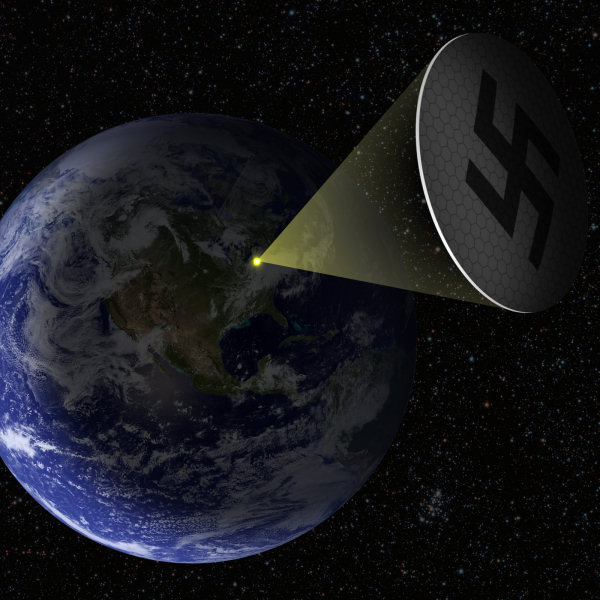
The quest for “superweapons,” such as the Sun Gun, underscores the perils of scientific concepts being hijacked for warfare, especially in times of emergency. It is also indicative of a wider historical trend where advances in technology—be it the atomic bomb, jet engines, or cyber war capabilities—are originally conceived of as means of maintaining peace but eventually find use in ruinous conflict.
Space-Based Energy: A Realistic Future?
While the Sun Gun was fanciful, the general concept of capturing solar power from space has remained an object of pursuit for peaceful means. Various space organizations, such as NASA and corporate entities like SpaceX, are conducting serious research on the viability of space-based solar power as an energy solution to future demands. The concept remains grounded in the hope of creating a sustainable energy source that can be transmitted back to Earth without the environmental impacts of fossil fuels.
Although this concept is quite different from the Sun Gun’s destructive capability, it is indicative of the ongoing human interest in harnessing space as a resource. The key will be keeping space-based energy systems dedicated to sustainable, peaceful applications, instead of developing into new weapons or military control.
Further Exploration: The Fascination with Nazi Superweapons and the Sun Gun’s Enduring Appeal
The Role of the Sun Gun in Alternative History
The Sun Gun, like many other advanced weapons concepts from Nazi Germany, has become a focal point in the genre of alternative history. In these speculative scenarios, historians and writers imagine worlds where Nazi Germany succeeded in creating such superweapons and using them to change the outcome of World War II. The Sun Gun is often portrayed as the ultimate weapon, capable of shifting the balance of power and possibly even turning the tide of the war in favor of the Axis powers.

In alternative history novels, the Sun Gun serves as a dramatic plot device, often tied to other real-world Nazi technologies like the V-2 rockets or jet fighters. These stories explore scenarios where the Nazis, with their technological superiority, are able to hold off the Allied forces or even achieve a victory. The Sun Gun, in these settings, is portrayed as an extraordinary technological leap that could have changed the course of history.
While these works are purely fictional, they reflect a cultural fascination with the idea of what might have happened if the Nazis had succeeded in developing world-changing technologies. The Sun Gun, with its immense potential and the radical nature of its concept, embodies the extremes of these imagined futures.
The Nazi Technological Mythos
The Sun Gun is not the only piece of “lost” Nazi technology that has captured the imagination of historians, conspiracy theorists, and enthusiasts alike. Other rumored Nazi inventions, such as Die Glocke (The Bell), Vril energy sources, and secret UFO-like crafts, have contributed to a wider narrative of Nazi superweapons. In these myths, the Nazis are often depicted as possessing secret technologies far beyond what the world had previously known.
The notion of advanced, secret Nazi technologies has been fueled by the fact that many German scientists and engineers, including key figures like Wernher von Braun, were brought to the United States after World War II under Operation Paperclip. This influx of talent into American military and space programs led to widespread speculation that the Nazis had far more advanced technologies than were ever revealed to the public.
These mythologies surrounding Nazi science and technology often present an alternate view of history—one in which the Nazis were on the brink of winning the war or even surviving it through technological means. The Sun Gun, in this context, becomes a symbol of these unrealized potentialities.
The Sun Gun and Its Influence on Conspiracy Theories
The Sun Gun has played a significant role in fueling the Nazi conspiracy theory subculture, particularly those that focus on the idea that Nazi Germany’s technological advancements were either suppressed, hidden, or secretly developed after the war. This line of thought suggests that secret Nazi factions, or those who escaped justice post-war, continued their work in hidden bases around the world, most notably in Antarctica, South America, or deep within secret bunkers.

One of the most common conspiracy theories tied to the Sun Gun is the claim that the Nazis built an operational prototype of the weapon but kept it hidden after the war’s end. These theories often paint a picture of Nazi scientists going underground to continue their work and harnessing advanced technologies, including anti-gravity propulsion, advanced spacefaring capabilities, and indeed, space-based weapons like the Sun Gun.
Though there is no credible evidence to support these claims, the allure of such ideas speaks to a human fascination with “what if” scenarios. The idea that secret Nazi superweapons, such as the Sun Gun, might have been suppressed, destroyed, or secretly built during the postwar period continues to capture the imagination of conspiracy theorists.
The Role of the Sun Gun in Pseudoscience
The Sun Gun also fits into the broader context of pseudoscience, where fringe theories and inventions that defy the known laws of physics are often treated as viable possibilities. In the postwar years, many individuals began to promote pseudoscientific ideas about the technological feats of Nazi Germany. These ideas frequently included far-fetched notions of energy manipulation, exotic propulsion systems, and other forms of “lost knowledge.”
As the Sun Gun was never realized, and its conception relied on principles that defied contemporary scientific understanding, it became a perfect subject for pseudoscientific speculation. Its association with esoteric beliefs and conspiracy theories further fueled the idea that Nazi Germany possessed secret knowledge that was either never fully disclosed or deliberately concealed. The Sun Gun, in this sense, serves as an enduring icon of a realm where technology, mysticism, and speculative science overlap.
In this respect, the Sun Gun can be seen as a prime example of how pseudoscience and fringe theories have survived in popular culture and conspiracy circles. While there is no evidence that the Nazis ever constructed anything like the Sun Gun, the myth has persisted due to its dramatic potential, the aura of mystery surrounding Nazi technology, and the widespread appeal of secret knowledge.
Modern Reinterpretations: How the Sun Gun Might Have Worked Today
The Concept of Solar Power Weapons: Real Science or Fantasy?
If the Sun Gun were to be revisited today, we would be faced with the question: How could a weapon based on concentrating solar energy be built with modern technology? While it remains highly speculative, modern advancements in energy systems and solar technology might offer insights into how something like the Sun Gun could theoretically be realized.
Today, solar concentrators are commonly used for energy production. Solar power plants already use large arrays of mirrors or lenses to focus sunlight onto a single point, generating heat that can then be converted into electrical energy. The concept of concentrating solar energy to a degree that it could become a destructive weapon is not entirely out of the realm of possibility—though the scale and technology required would be astronomical. However, the real issue remains one of logistics, efficiency, and control.
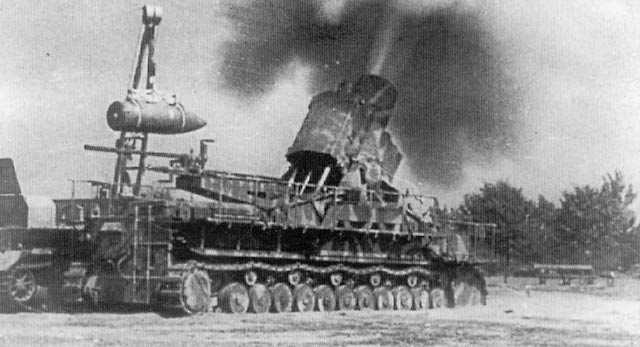
For example, creating a space-based solar weapon would require overcoming significant obstacles in terms of energy transfer. Space-based solar power, a concept that has been studied in recent years, involves transmitting the captured energy from space back to Earth via microwave or laser beams. While this idea is still in the experimental phase, a solar power weapon with enough focused energy to cause destruction would likely need advancements in materials science, energy transmission, and space infrastructure far beyond what is available today.
Moreover, the geopolitical and ethical implications of such a weapon are profound. Using space to concentrate solar energy into destructive beams could have unintended consequences—especially if these technologies fall into the wrong hands.
The Sun Gun in the Age of Climate Change and Renewable Energy
Interestingly, as the world faces the challenges of climate change and a global transition toward renewable energy, the idea of space-based solar power is receiving serious attention in the scientific community. The concept of harvesting solar energy from space could help provide clean, renewable energy to meet the growing demands of Earth’s population.
While these space-based solar power systems would be intended for peaceful purposes, the Sun Gun’s original idea of using concentrated solar energy to focus intense heat remains a cautionary tale about the potential for weaponization. As humanity continues to develop technologies capable of harvesting and transmitting solar energy from space, the lessons of history—specifically, the misuse of technological breakthroughs for destructive purposes—should guide the ethical and responsible development of these systems.
The Sun Gun, in this context, serves as both a relic of a dangerous era and a reminder of the fine line between scientific progress for the good of all and the potential for catastrophic misuse.
The Enduring Legacy: Sun Gun as Symbol of Human Innovation and Hubris
A Cautionary Tale
The legacy of the Sun Gun lies not just in its technological ambition but in its place as a cautionary tale. It embodies the folly of attempting to harness the immense, untapped power of the universe without fully understanding the consequences of such power. The Sun Gun represents the allure of ultimate technological dominance—the fantasy of being able to wield the very energy of the Sun itself, turning it into a weapon of overwhelming destruction.
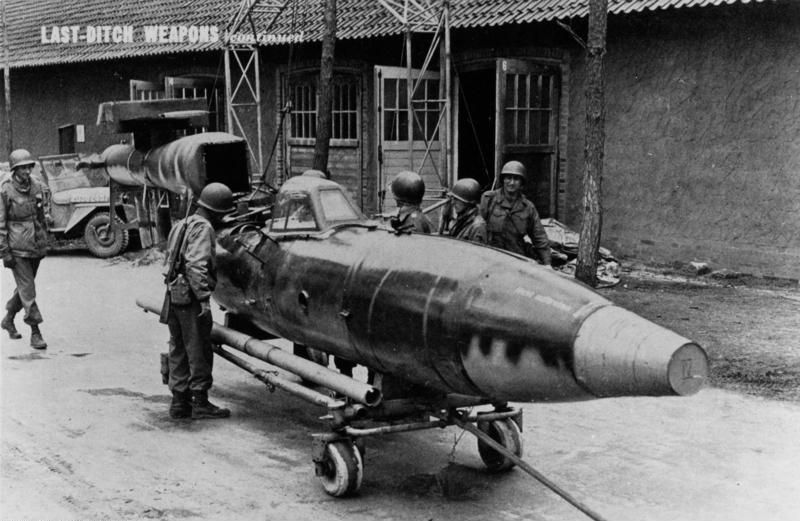
Much like other Nazi superweapons, the Sun Gun serves as a reminder that science, when driven by ideology and unchecked ambition, can be warped into tools of terror. In an era where technological advancements continue to accelerate, from artificial intelligence to space exploration, the lessons of the past—especially the dangers of militarizing scientific progress—remain relevant.
Reflections on the Role of Technology in Society
The Sun Gun also prompts reflections on the role of technology in shaping society. Throughout history, many technologies have been developed with peaceful intentions, only to be diverted into destructive uses. The Sun Gun is a particularly extreme example of this phenomenon, a dream of ultimate power without any consideration of the ethical implications.
As we continue to push the boundaries of technology—whether through nuclear energy, space exploration, or artificial intelligence—it is important to consider not only what is possible but also what is responsible. The Sun Gun serves as a metaphor for the potential dark side of technological innovation: the risk of creating tools that could harm rather than help.
In the end, the Sun Gun is a relic of a time when science and warfare intertwined in dangerous ways. Though it was never built, its symbolism continues to resonate as a warning against unchecked technological ambition.
Conclusion
The Sun Gun, as an idea and a concept, encapsulates the very essence of human ambition—our unyielding desire to conquer the forces of nature and manipulate them to our advantage. The Nazis’ pursuit of such an extravagant, almost fantastical weapon serves as a stark reminder of what can happen when science is pushed to extremes without ethical consideration. While the Sun Gun itself was never realized and likely never could have been, its existence in our collective imagination underscores the dangers of technological power unchecked by moral responsibility.
At its core, the Sun Gun reflects humanity’s capacity for invention, but also our propensity to misuse and misapply those innovations. In times of war, fear, and desperation, the drive to achieve technological supremacy can cloud judgment and lead us to pursue solutions that have far-reaching and often unforeseen consequences. The notion of weaponizing solar energy—of turning the very power of the sun into a tool of destruction—reveals just how far human ingenuity can stretch, but also just how dangerous it can become when applied with the wrong intentions.
In modern times, as we witness the rapid advancement of technologies in space exploration, renewable energy, and artificial intelligence, the story of the Sun Gun stands as a cautionary tale. The concept of harnessing space-based power for human benefit—whether for peaceful energy purposes or potential weapons—is not beyond our reach, but it requires an ongoing commitment to thoughtful regulation, international cooperation, and a deep respect for the broader consequences of our actions.
The Sun Gun, though a product of a dark chapter in history, should not simply be dismissed as the ramblings of a regime out of touch with reality. It is a symbol of the tension between technological potential and the human capacity for hubris. It asks us to reflect on our own relationship with the tools we create, and how our ambitions, if unchecked, can lead to destruction. The myths and legends surrounding the Sun Gun are, in many ways, a reflection of our ongoing struggle to balance progress with responsibility.
As we continue to explore the frontiers of science and technology, we must remember that every new breakthrough brings with it the potential for both great good and great harm. The Sun Gun, though it may never come to life as originally imagined, lives on as a lesson—an enduring reminder that with power comes the responsibility to wield it wisely.

It serves as a mirror for our own times, urging us to question not just what we can do with technology, but what we should do with it. And as we continue to chart our path forward, the legacy of the Sun Gun is one we must remember: a symbol of both our capacity for creation and our need for caution.
Latest Updates



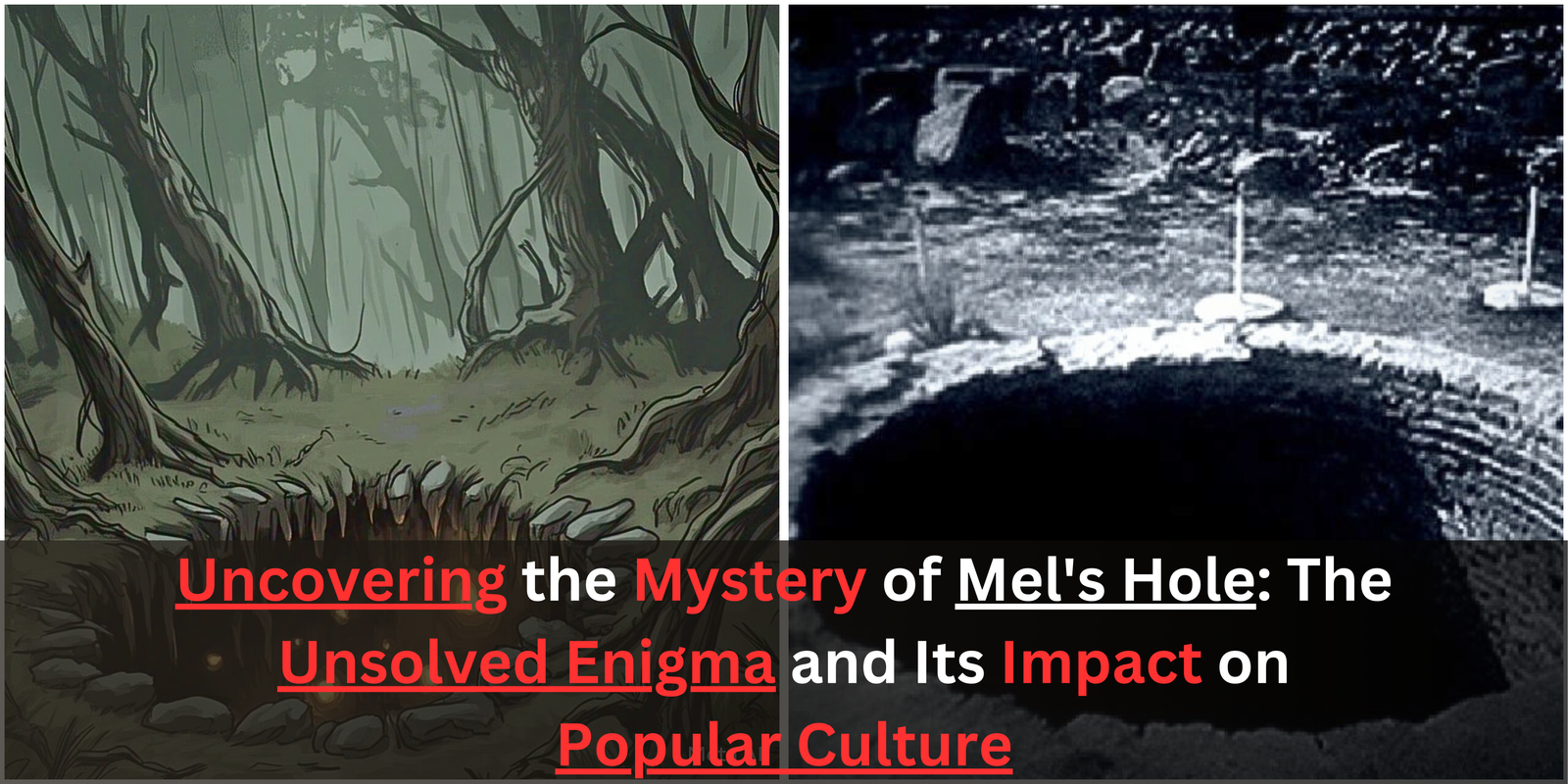


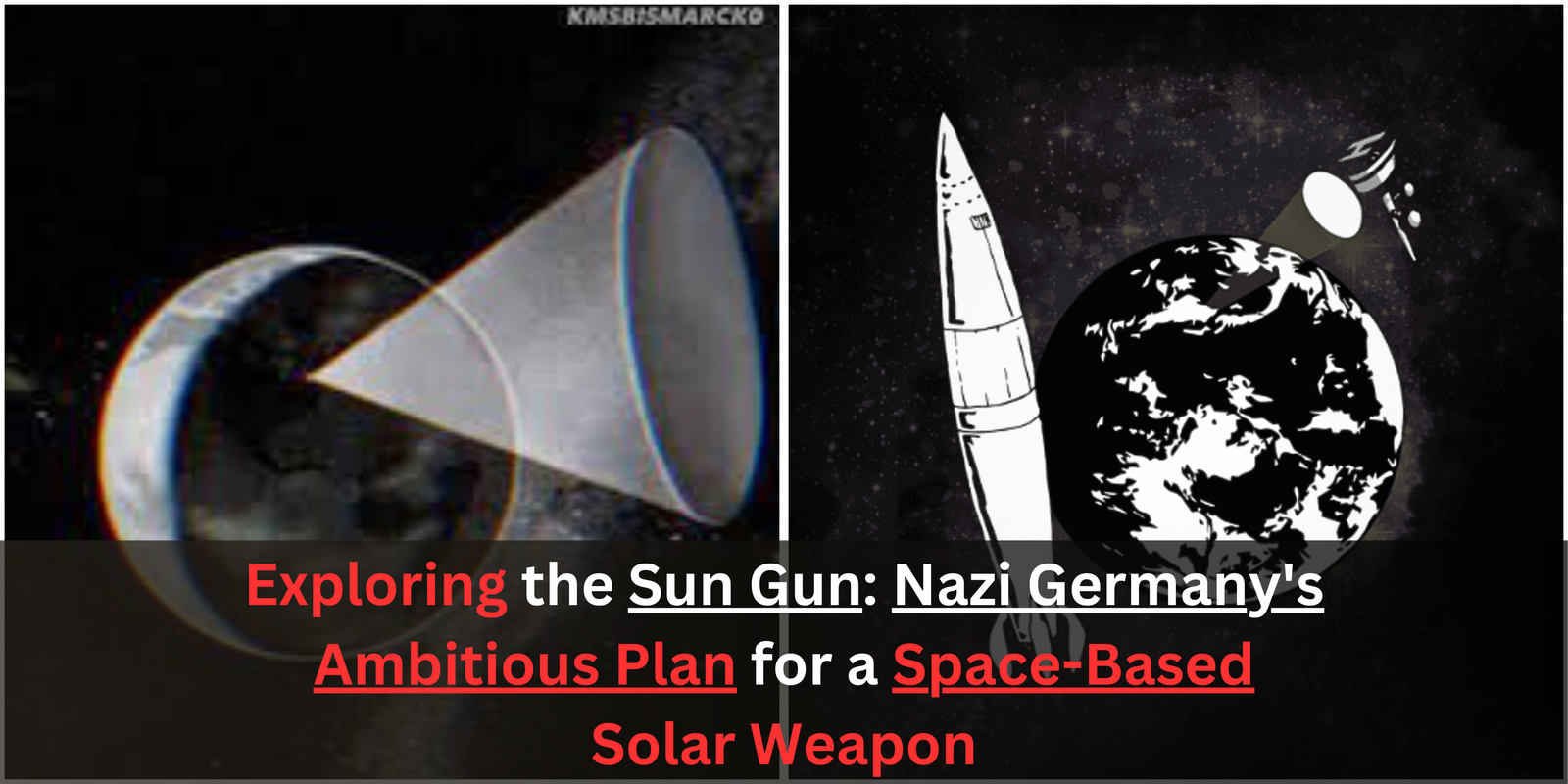
 Let’s imagine, explore, and uncover the mysteries together!
Let’s imagine, explore, and uncover the mysteries together!